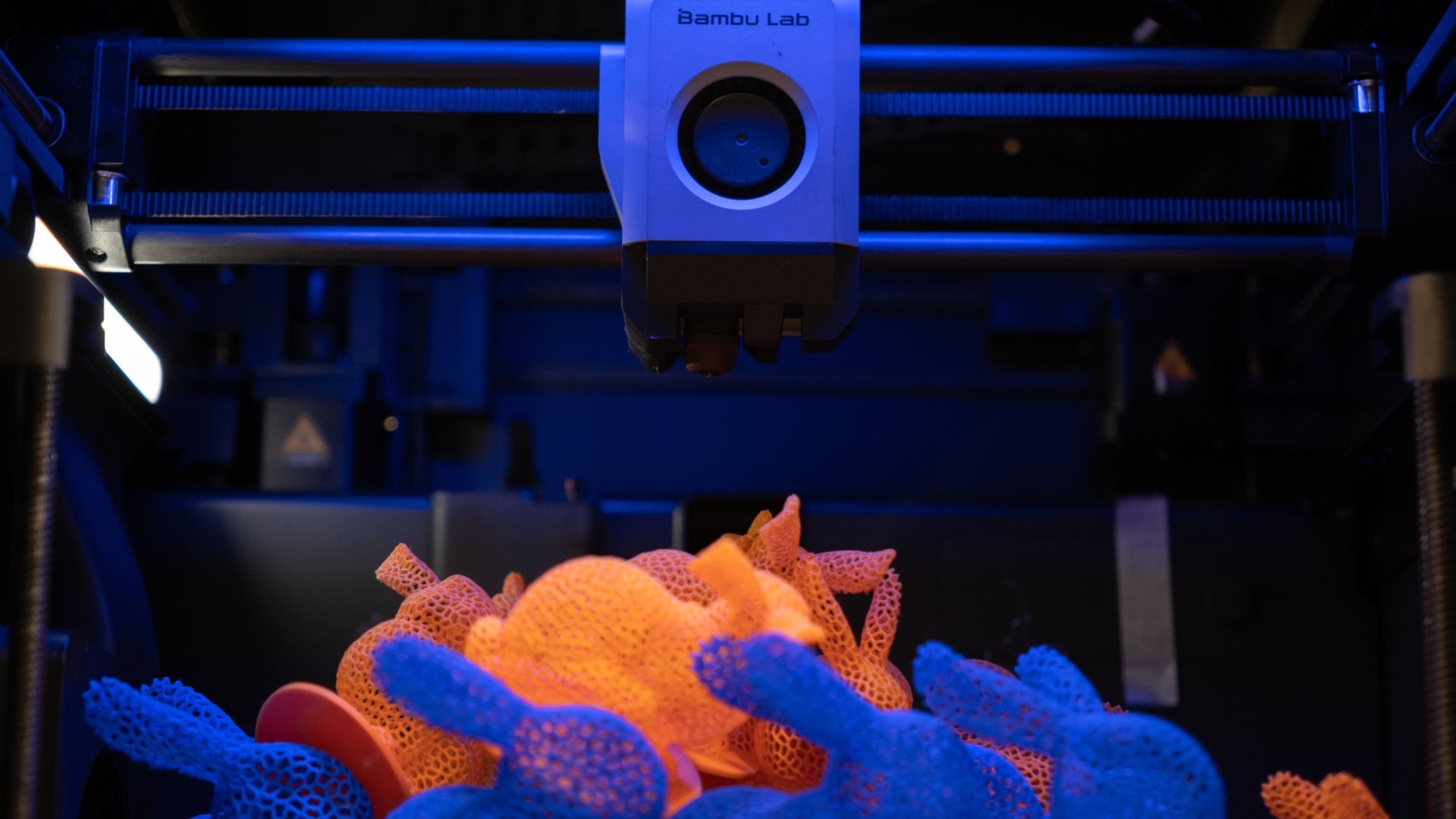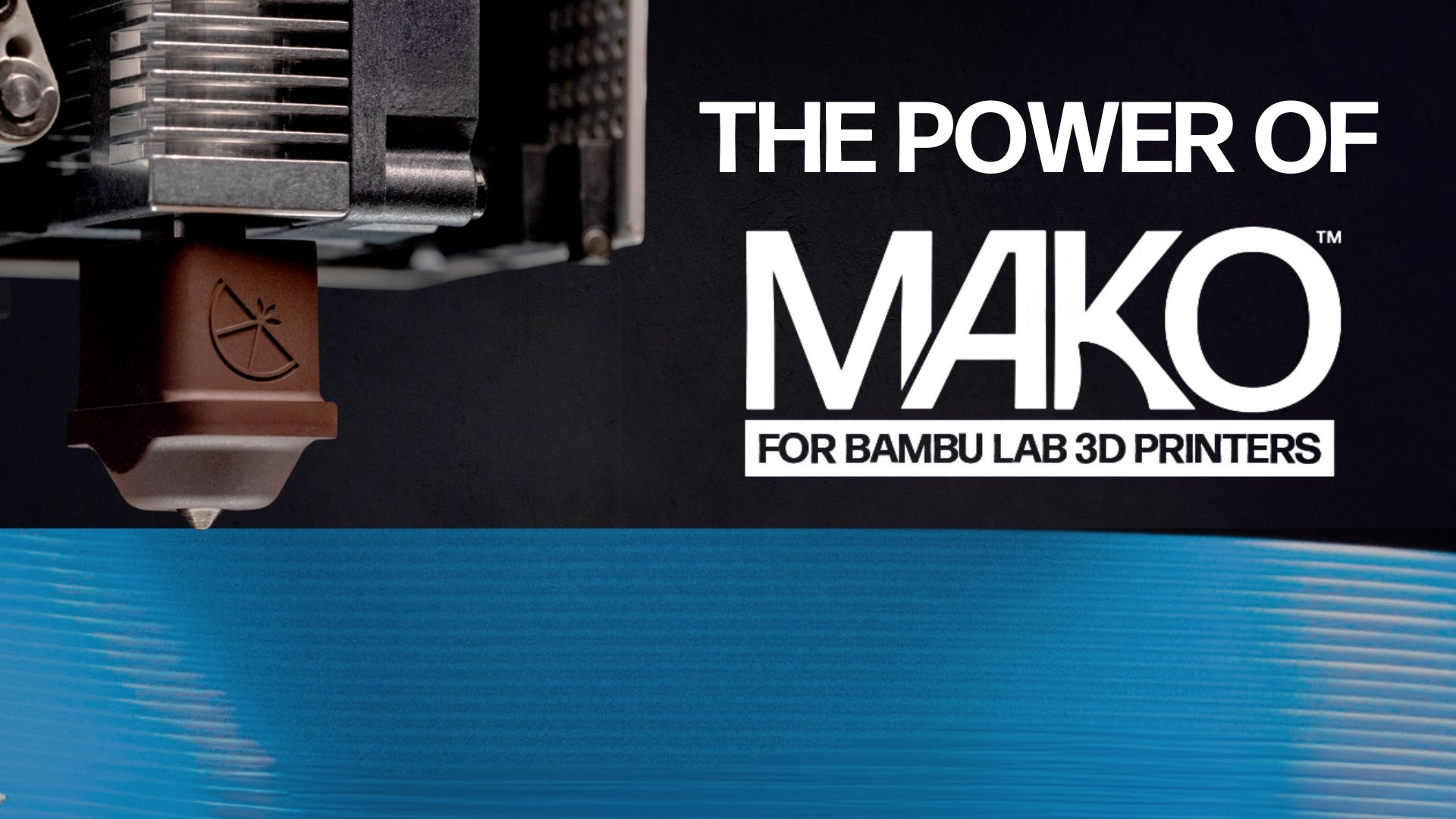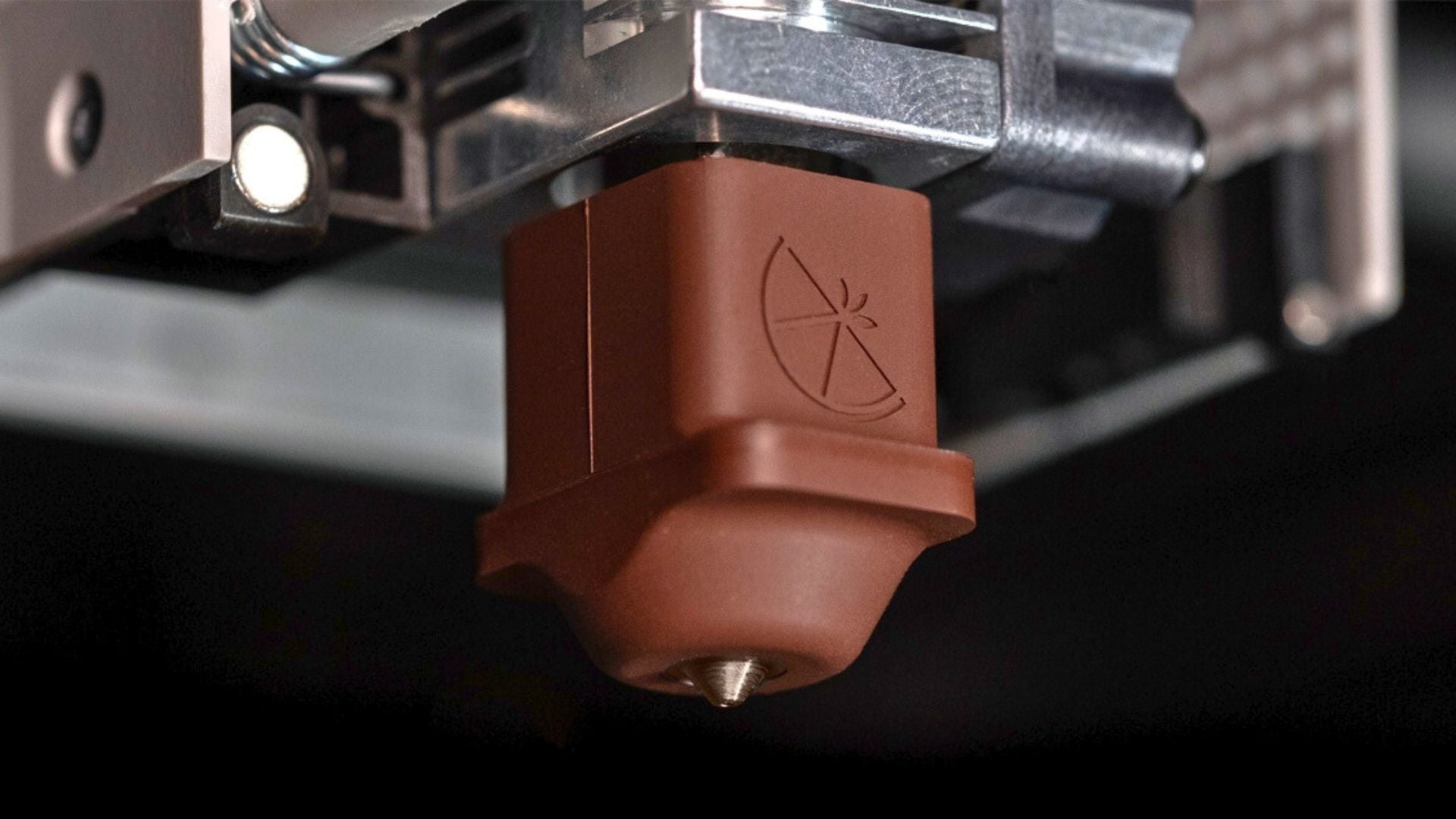
The Evolution of the Mosquito Hotend: Revolutionizing 3D Printing

Peyton Shelton
Marketing and Social Media Coordinator
The Mosquito® Hotend was launched in 2018, and development started back in 2016. You may be wondering: why outline all of the design changes that the Mosquito has gone through over the years now? Why not before?
At our core, we are a small team of engineers dedicated to our products. For most of Slice’s history, we have been focused more on our internal product development than our external marketing and consumer education. As we have iterated on and improved the Mosquito over the last seven years, we have not always done the best job explaining or announcing the changes to the public.
This post serves as an exhaustive history of the Mosquito Hotend: how it came to be, how it has improved over the years, and how we continue to push the Mosquito into the future. We’re showcasing never-before-seen prototypes to explain the unique history of the Mosquito, a history that started in a small Florida garage seven years ago.
Inception and Vision
The genesis of the Mosquito Hotend was rooted in a simple yet potent idea: to revolutionize the 3D printing experience by enabling a one-handed nozzle change. According to Chris Montgomery, inventor of the Mosquito and Slice CTO, the initial mission was to address the persistent issue faced by hobbyists—seamless nozzle interchangeability without compromising wires or disrupting the hot block.
Circa 2016, the landscape of hotends was dominated by standards like the E3D V6 hotend and RepRap nozzles. The Mosquito drew inspiration from these benchmarks but sought to innovate significantly. Inspired by the shape of a 2510 hotend cooling fan, its square design transformed the conventional outlook and compacted the structure, enhancing its efficiency.
The Design Journey
Iterative improvements have marked the journey from the first iteration to the current fourth-generation Mosquito model. The initial versions comprised basic components: a metal tube connected to a hot block, a metallic square enclosure, and a nozzle. Over subsequent iterations, materials evolved, designs became more streamlined, Bimetallic Heat Breaks™ were introduced for enhanced temperature control, and fan surfaces were expanded for improved cooling efficiency.
Prototype 1 - Proof of Concept
The initial prototype version of the Mosquito Hotend introduced a simplistic yet innovative design to solve the persistent issue of tedious nozzle changes. It comprised a basic structure of a thin-walled metal tube connected to a hot block wrapped in Kapton tape. The hot block and thin tube were enclosed within a metal square with a brass nozzle; this version laid the groundwork for subsequent developments.
Though rudimentary, its significance lies in addressing a common challenge faced by hobbyists, marking the inception of the Mosquito's journey toward a user-centric solution.

Prototype 1 - Proof of Concept
The second iteration brought about significant material enhancements and a redesign that set it apart from conventional hotend structures. This version featured a machined aluminum heat sink that bears much resemblance to today’s Mosquito. The first version of the Bimetallic Heat Break was constructed from a thin-walled tube and two brass nozzles.
Repositioning the hot block below the original square design marked a notable departure from traditional setups—marking the first implementation of the rigid tubular structure that the Mosquito is known for. At Tom Sanladerer's advice, the hotend was lengthened to more closely resemble the form factor of standard hotend options for easier aftermarket integration.
This pivotal change improved performance and increased compatibility, setting a distinctive precedent that distinguished the Mosquito from its contemporaries.

Prototype 2 - Solidifying Form
Building upon its predecessor, the third iteration introduced subtle yet crucial refinements. An internal heat break fin was added to enhance functionality, and the screws used to connect the heat sink and hot block were reduced from M2 to M1.4 to improve thermal isolation.
This prototype introduced Slice’s signature retaining screw system for heaters and temperature sensors, a departure from the industry standard of clamping heaters and sensors into place. This decision removed unnecessary stress from the cartridges, extending their lifespan.
Materials evolved, utilizing production-grade components, marking a crucial transition toward better durability and performance. Most common hot blocks are typically machined from aluminum, which has a much higher coefficient of thermal expansion (CTE) than steel or brass nozzles. This requires the hot-tightening of nozzles with standard hot blocks, a less-than-ideal user experience. A copper alloy was the material of choice for the Mosquito, allowing for cold, one-handed nozzle changes.
This version solidified Mosquito's commitment to continual improvement and reliability—the first step toward a pre-production prototype.

Prototype 3 - Material Selection
The key innovation was introducing a small heat sink on the heat break, revolutionizing temperature control, and marking the creation of the Bimetallic Heat Break silhouette we know today. This addition effectively managed heat distribution, curbing issues like heat creep and ensuring stable printing. The refined temperature regulation enhanced print quality and facilitated seamless transitions between filaments.
Despite no significant material changes, this iteration optimized the hotend's design for better stability and functionality. Prototype 4 solidified Mosquito's reputation for pushing the boundaries of reliability and precision in 3D printing technology and was the Generation-1 version that debuted at the 2018 Midwest RepRap Festival (MRRF).

Prototype 4 - Pre-Production
The Evolution of Mosquito
Since 2018, Slice Engineering has continually iterated and improved Mosquito’s design, taking into account feedback from partners and the 3D printing community. In March 2018, the Generation-1 Mosquito Hotend debuted at MRRF, and the first design revisions were made soon after.
Generation-2 (2018, Q4)
Mosquito’s heat break design was quickly modified after the product’s launch at MRRF. Once Mosquito was in the hands of our first customers, we noticed two key issues that needed to be addressed:
- Much of our testing had been done with ABS or other engineering materials. Printing PLA, the most ubiquitous filament, was difficult and often resulted in clogs.
- Filament extrusion lines at the time were often inconsistent, resulting in out-of-spec filaments with varying filament diameters. The Gen-1 Mosquito was tightly toleranced, making it nearly impossible to print with an out-of-spec filament.
In late 2018, the Gen-2 Mosquito was released with an improved heat break geometry to accommodate PLA and inconsistent filament diameters better. This change vastly improved customer satisfaction and quickly made Mosquito an industry staple.

Generation-2 Mosquito and Magnum (2018, Q4)
After two years of use and community feedback, the Gen-3 Mosquito was released in 2020 alongside the debut of Mosquito Liquid. This revision included several crucial changes that drastically improved Mosquito’s performance:
- Heat sink design was overhauled to accommodate the Prusa Research MMU and Mosaic Palette.
- Rigidity of the heat break was improved for easier assembly and maintenance.
- A lubricious coating was added to Mosquito and Magnum heat breaks to reduce internal friction.
These significant changes to the heat break changed how Mosquito could be utilized, opening the door to new and exciting applications that were previously inaccessible.
Generation-4 (2021, Q2)
The final Mosquito design revision that introduced the hotend available today was introduced in 2021—targeted at improving Mosquito’s abrasion resistance without changing the heat break’s form factor.
While collaborating on hotend integration with RIZE 3D, it became clear that the Mosquito heat break could not handle some of the highly abrasive materials they utilized.
We partnered with RIZE to develop a heat break that could handle even the most abrasive filaments. After much iteration and testing, we revised the internal design of the heat break to improve its abrasion resistance. This significant improvement marked the transformation of Mosquito from a hobby-oriented accessory to an industrial component and initiated its adoption by major 3D printer manufacturers worldwide.
This heat break revision was rolled out to the public in Q2 of 2021, enabling abrasion-resistant printing for all Slice Engineering customers.
Mosquito’s Legacy: Magnum+ and Prime
In 2019, Slice Engineering started the development of higher-flow versions of the Mosquito for professional and industrial applications in demanding environments.
Mosquito Magnum+ was officially launched in 2021, followed by Mosquito Prime in 2023. While both hotends were designed in tandem, Mosquito Prime was a much harder nut to crack. It took over three years of design, iteration, and testing before Prime was ready to go to market—but the response from industrial and commercial customers proved that it was worth the wait.
The final versions of Mosquito Magnum+ and Prime feature lengthened melt zones, multiple heaters and sensors, and a vertical heater and sensor orientation. Both Magnum+ and Prime retain Mosquito’s signature Bimetallic Heat Break, rigid heat sink structure, and premium materials, continuing Mosquito’s legacy and enabling industrial additive manufacturing processes worldwide.
Magnum+ and Prime have become critical components in medical, military, and mass manufacturing applications—including prosthetics, orthopedics, drone printing, and various non-planar applications. Magnum+ is also part of the first material extrusion (also called FDM or FFF) system to be FDA-approved for use in spinal implants.

Mosquito Magnum+ and Prime Prototypes
Final Thoughts
The evolution of the Mosquito Hotend stands as a testament to the power of innovation and user-centric design in 3D printing technology. What began as a simple yet revolutionary idea—to enable seamless nozzle changes—has burgeoned into a legacy of precision, reliability, and continual improvement.
Through iterative upgrades and user feedback, Slice Engineering elevated the Mosquito from a basic concept to the refined Generation-4 model, setting new standards in reliability and functionality. The timeline of milestones showcases a commitment to progress and addressing user needs.
Moreover, the creation of Magnum+ and Prime reflects Slice Engineering's forward-thinking approach to catering to professional and industrial requirements, culminating in the groundbreaking Mosquito Prime.
The evolution of the Mosquito is not merely a narrative of design refinements—it's a story of resilience, adaptability, and a continuous quest for excellence that has reshaped the possibilities within the 3D printing realm. As the journey continues, one thing remains certain—the legacy of Mosquito stands as a beacon of innovation, inspiring the future of additive manufacturing.
Timeline and Milestones





